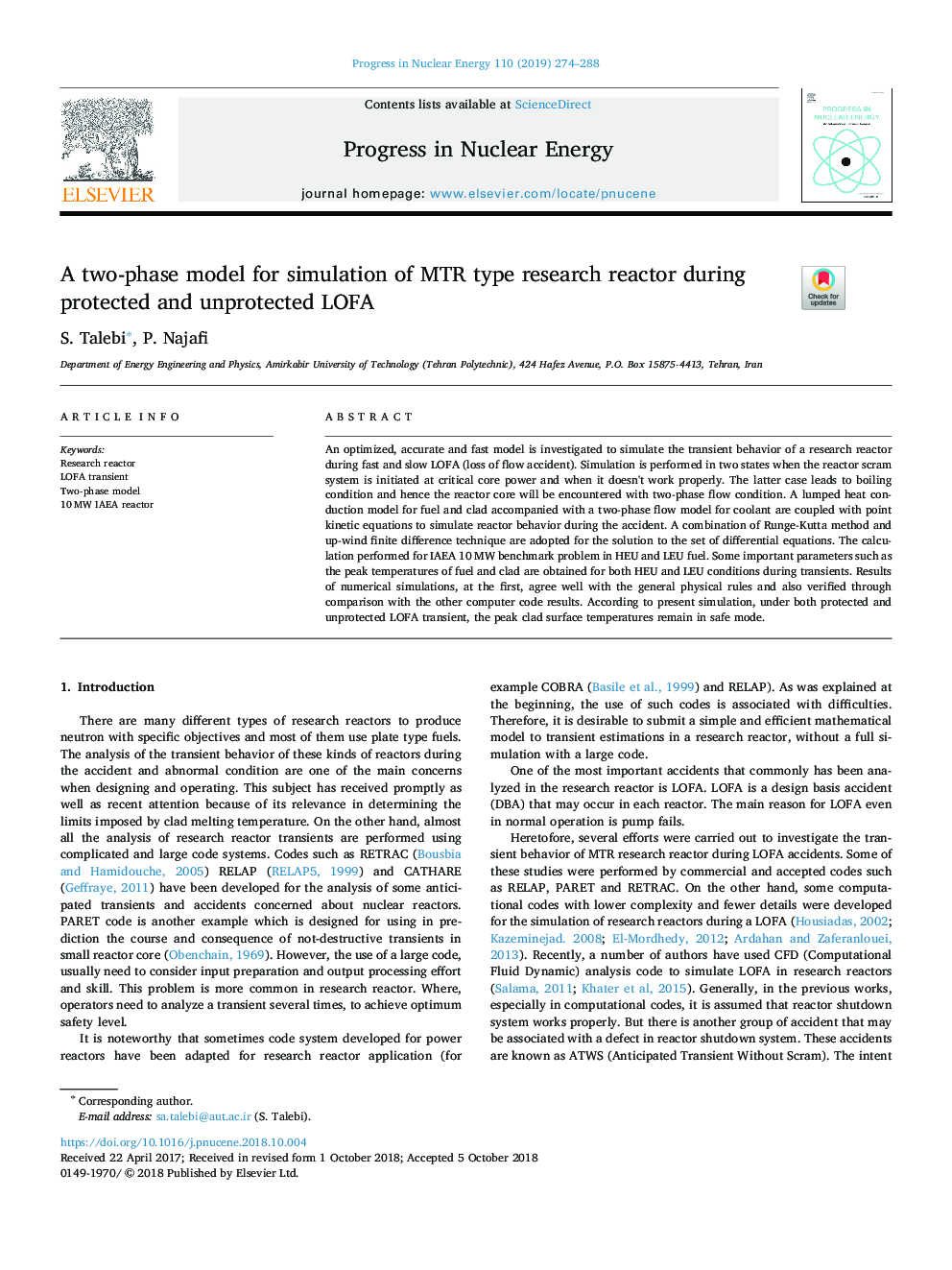| Article ID | Journal | Published Year | Pages | File Type |
|---|---|---|---|---|
| 11029510 | Progress in Nuclear Energy | 2019 | 15 Pages |
Abstract
An optimized, accurate and fast model is investigated to simulate the transient behavior of a research reactor during fast and slow LOFA (loss of flow accident). Simulation is performed in two states when the reactor scram system is initiated at critical core power and when it doesn't work properly. The latter case leads to boiling condition and hence the reactor core will be encountered with two-phase flow condition. A lumped heat conduction model for fuel and clad accompanied with a two-phase flow model for coolant are coupled with point kinetic equations to simulate reactor behavior during the accident. A combination of Runge-Kutta method and up-wind finite difference technique are adopted for the solution to the set of differential equations. The calculation performed for IAEA 10â¯MW benchmark problem in HEU and LEU fuel. Some important parameters such as the peak temperatures of fuel and clad are obtained for both HEU and LEU conditions during transients. Results of numerical simulations, at the first, agree well with the general physical rules and also verified through comparison with the other computer code results. According to present simulation, under both protected and unprotected LOFA transient, the peak clad surface temperatures remain in safe mode.
Keywords
Related Topics
Physical Sciences and Engineering
Energy
Energy Engineering and Power Technology
Authors
S. Talebi, P. Najafi,
